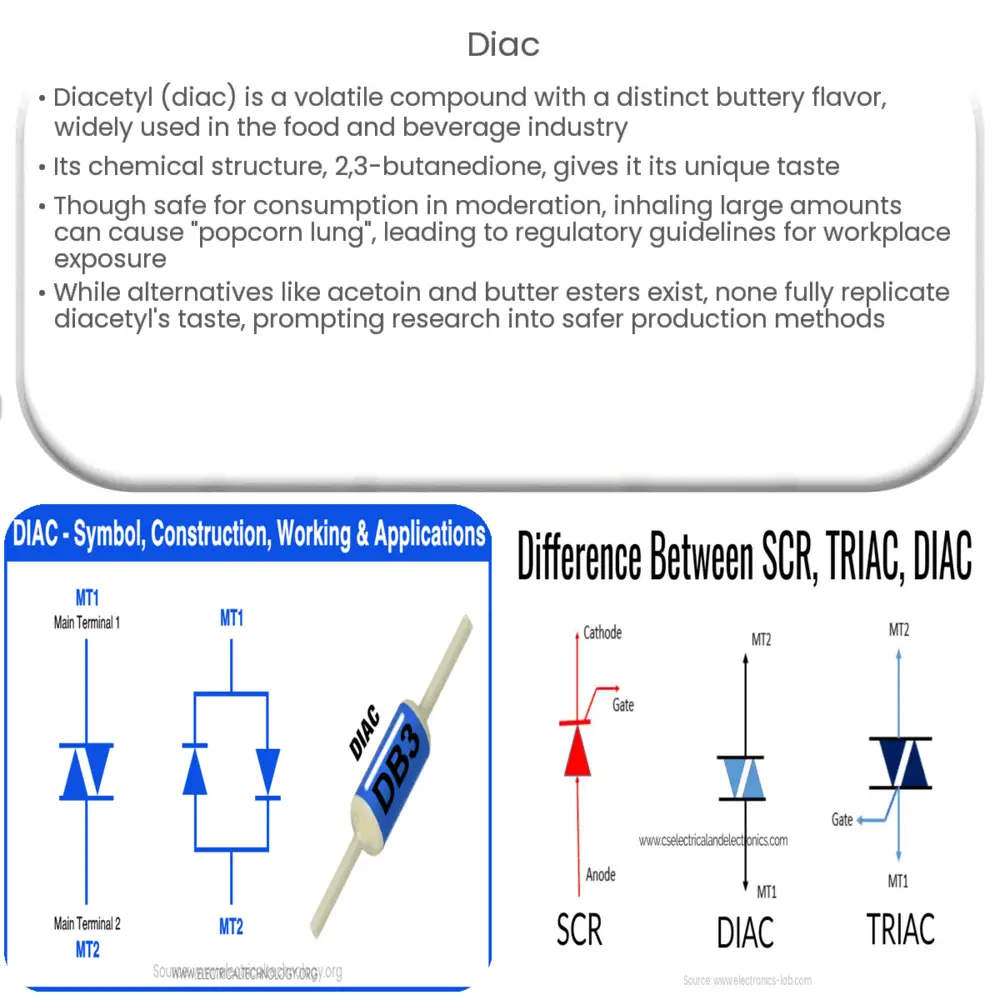Dive into the world of diacetyl, its applications, health concerns, and potential alternatives in our comprehensive guide.

Understanding Diac
Diac, also known as diacetyl, is a volatile organic compound that has a rich, buttery flavor. It’s predominantly used in the food and beverage industry to add a unique taste to a variety of products.
The Structure and Properties of Diac
The chemical structure of diacetyl, or 2,3-butanedione, consists of four carbon atoms, six hydrogen atoms, and two oxygen atoms. These atoms are arranged in a way that the molecule forms a diketone structure. Two carbon atoms are doubly bonded to the oxygen atoms, while the other two are bonded to three hydrogen atoms each. The diketone structure is responsible for the compound’s characteristic flavor and scent.
Applications in Food and Beverage Industry
-
Diacetyl is widely used in the food industry as a flavoring agent. It imparts a creamy, buttery taste to food items, making it a popular ingredient in microwave popcorn, certain types of cheese, and margarine. It is also used in certain sweet goods like cookies and cakes.
-
In the beverage industry, diacetyl is a common component in alcoholic drinks, particularly beers and chardonnay wines. It contributes to the buttery or butterscotch notes often found in these beverages.
-
Interestingly, diacetyl is also a byproduct of fermentation, a process extensively used in brewing and winemaking. During fermentation, yeast metabolizes sugars and produces diacetyl, among other compounds, which contributes to the overall flavor profile of the beverage.
Health Concerns and Regulations
While diacetyl is safe for consumption in moderate amounts, it has been associated with a lung condition called bronchiolitis obliterans, also known as “popcorn lung”, when inhaled in large amounts. This condition, characterized by scarring and inflammation of the small airways in the lungs, has been observed among workers in factories that produce microwave popcorn or other products containing diacetyl.
Given the potential health risks, several regulatory bodies, including the US Occupational Safety and Health Administration (OSHA), have issued guidelines for workplace exposure to diacetyl. However, there is no established safe exposure level for the general public.
Alternatives to Diacetyl
Due to the health concerns surrounding diacetyl, many industries have sought to find safe alternatives. Some of these alternatives include:
-
Acetoin: Acetoin is a naturally occurring chemical that is used as a flavoring substance. It has a similar buttery taste to diacetyl but without the associated health risks.
-
Butyric acid: This substance can also be used as a flavoring agent due to its characteristic buttery taste. However, it has a strong, unpleasant smell and must be used in moderation.
-
Butter esters: These are formed by combining a fatty acid with an alcohol, resulting in a substance with a rich, buttery flavor. They are considered safe for consumption.
Future Research and Development
While alternative substances have been identified, none perfectly replicate the unique taste of diacetyl. Therefore, continued research and development are necessary. Scientists are exploring the possibility of genetically modifying yeasts to produce less diacetyl during fermentation, thereby minimizing potential health risks while retaining the desired flavor profiles.
Conclusion
In conclusion, diacetyl is a key flavoring compound used in various food and beverage products due to its distinctive buttery flavor. While it is safe for consumption in moderation, overexposure through inhalation can lead to health complications. As such, it is crucial to ensure that workplaces using diacetyl adhere to safety guidelines. Furthermore, ongoing research into alternatives and methods to reduce diacetyl production is vital to ensure the continued safety and enjoyment of our favorite foods and beverages.




